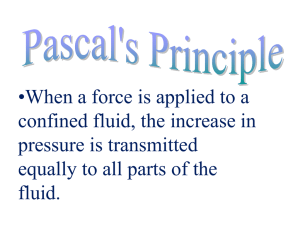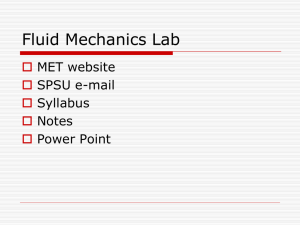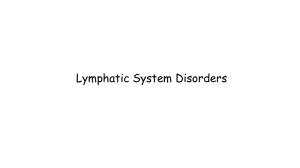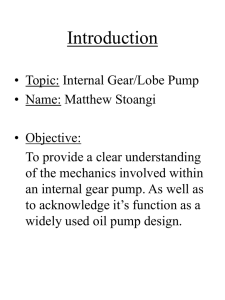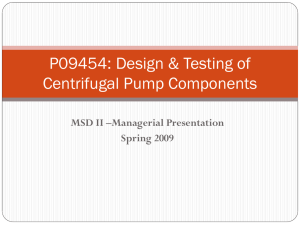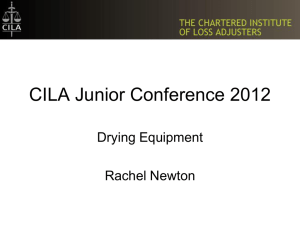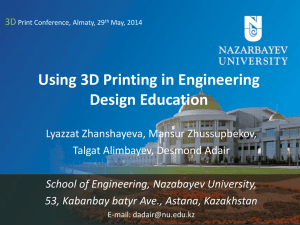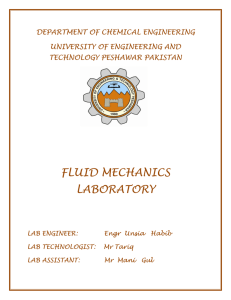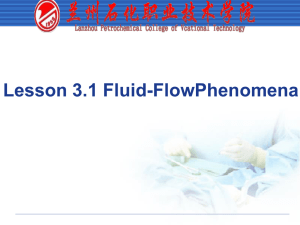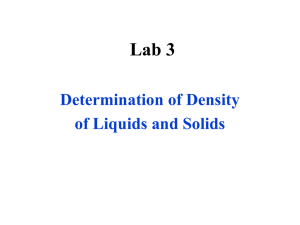Unit Operations in Food Processing
advertisement
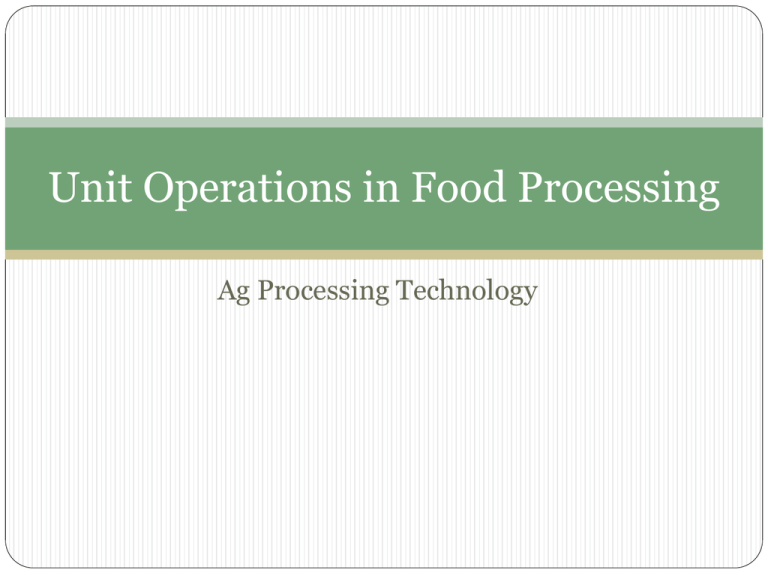
Unit Operations in Food Processing Ag Processing Technology Food Processing Series of physical processes that can be broken down into simple operations These operations can stand alone Unit Operations Material Handling Cleaning Separating Size reduction Fluid Flow Mixing Heat transfer Concentration Drying Forming Packaging Controlling Materials Handling Includes Harvesting, refrigerated trucking of perishable produce, transportation of live animals, conveying a product from truck or rail car to storage During these operations Sanitary conditions must be maintained Losses minimized Quality maintained Bacterial growth minimized Transfers and deliveries must be on time while keeping time to a minimum for efficiency and quality Trucks, trailers, harvesting equipment, railcars , a variety of conveyors, forklifts, storage bins, & pneumatic lift systems are all part of the process Cleaning Ranges from dirt removal to the removal of bacteria from liquids Uses Brushes High-velocity air Steam Water Vacuums Magnets Microfiltration Mechanical separation Method used depends on the food surface Equipment and floors and walls of the facility also require frequent, thorough cleanings to maintain product quality Separating Achieved on the basis of density or size and shape Density based separations include Cream from milk Solids from suspension Removal of bacteria from fluid Cream Separator Disc type centrifuge Separates the milk into low and high density fluid streams, permitting the separate collection of cream and skim milk Clarification Done with a clarifier-a disc type centrifuge that applies forces of 5,000-10,000 times gravity and forces denser materials to the outside Used to remove sediment and microorganisms Allows solids to be removed Used to recover yeast cells from spent fermentation broths and to continuously concentrate bakers cheese from whey Membrane Processes Uses membranes with varying pore sizes to separate on the basis of size and shape Reverse osmosis Uses membranes with the smallest pore and is used to separate water from other solutes Requires a high pressure pump Ultra filtration Uses membranes with larger pores and will retain proteins, lipids and colloidal salts while allowing smaller molecules to pass through to the permeate phase Requires a low pressure pump Microfiltration Pores less than 0.1 microns are used to separate fat from proteins and to reduce microorganisms from fluid food systems Requires a low pressure pump Size Reduction Uses high-shear forces, grater, cutters, slicers, homogenizers, ball mill grinders Size reducers used for meat include Grinders, Bacon slicers, sausage stuffers, & vertical choppers Better thought of as size adjustment because size can be reduced or it can be increased by aggregation, agglomeration or gelation Pumping (Fluid Flow) Achieved by either gravity flow or through the use of pumps Gravity flow Flow is laminar and is transferred from the fluid to the wall between the adjacent layers Adjacent molecules don’t mix Pumps Centrifugal pump uses a rotating impeller to create a centrifugal force within the pump cavity. The flow is controlled by the choice of the impeller diameter and rotary speed of the pump drive. The capacity of a centrifugal pump is dependent upon the speed, impeller length and the inlet and outlet diameters Positive Pumps consist of a reciprocating or rotating cavity between two lobes or gears and a rotor. Fluid enters by gravity or a difference in pressure, and the fluid forms the seals between the rotating parts. The rotating movement of the rotor produces the pressure to cause the fluid to flow. Mixing Two major purposes Heat transfer Ingredient incorporation Different mixer configurations are used to achieve different purposes Efficiency depends on Design of impeller Diameter of impeller Speed baffles Heat Exchange Used for either heating or cooling Used to Destroy microorganisms, produce a healthful food, prolong shelf-life through destruction of enzymes and to promote products with acceptable taste, odor and appearance 5 Factors that Influence Heat Transfer Heat Exchanger Design 2. Heat Transfer properties of the product 1. Specific heat Thermal conductivity Latent heat Density 4. Method of Heat Transfer 3. 5. Conduction Radiation Convection Viscosity Types of Heat Exchanges Used In the Food Industry Plate Pass fluid over a plate where heating or cooling medium is being passed up and down on the other side of the plate Most efficient method of heating fluids with low viscosity Tubular Composed of a tube within a tube in which product and heating or cooling medium are flowing in opposite directions. Low cost Used for fluids of higher viscosities Swept Surface Have blades that scrape the surface of the heat exchanger and bring new product continuously to the heat or cooling surface Used for fluids of very high viscosity Example: Ice Cream Freezer Common Unit Processes that Include Heat Transfer as a Unit Operation Pasteurization (heat) Sterilization (heat) Drying (heat) Evaporation (heat) Refrigeration (cold) Freezing (cold) Concentration Achieved through evaporation and reverse osmosis Often used a pre-step to drying to reduce costs Drying 3 methods Sun or tray Spray freeze Sun or Tray Drying Least expensive Used with products that are already solid like fruits and vegetables Drying is achieved through exposure to the sun or a current of warm or hot air Used to make grapes into raisins Freeze Drying Used with heat sensitive products Moisture is removed without a phase change Commercially only instant coffee is widely freeze dried Spray Drying Most common Used for fluid products Forming Processes Compacting Pressure Extrusion Molds Powders & binding agents Heat and pressure Extrusion cooking Used for Hamburger patties, chocolates Jellies, tablets, butter, sausages, Variety breads, margarine bars, cheeses Packaging Machines operate at high speeds and automatically package food products in a stepwise and automated fashion from forming the container, filling the container, sealing the container, labeling and stacking it Use a variety of materials Controlling Tools include Valves Thermometers Scales Thermostats Other instruments to control pressure, temperature, fluid flow, acidity, weight, viscosity, humidity, time and specific gravity All automated Conserving Energy Energy intensive Energy represents a significant share of the costs of the final product Food processors are always looking for new ways to optimize energy use Energy requirements are monitored and new and more efficient ways are continually looked for Examples: Heat that is used or removed is captured and used somewhere else in the process New Processes Major goal of food scientist and food processing engineers Always looking to improve quality and/or increase efficiency Summary Material handling, cleaning, separating, size reduction, fluid flow, mixing, heat transfer, concentration, drying, forming, packaging and controlling are the units that make up food processing Most processing involves a combination or overlap of these units of operation When they do overlap complex controls ensure the proper function or each operation

